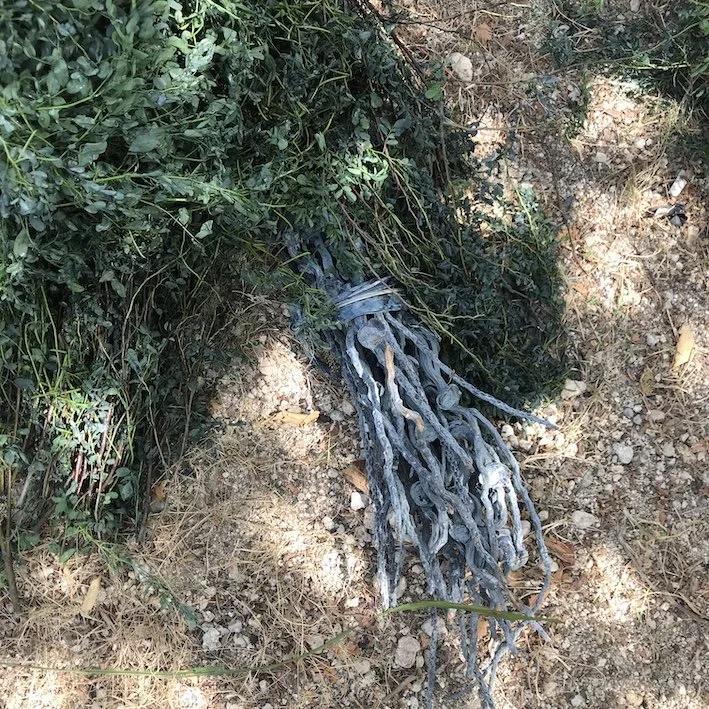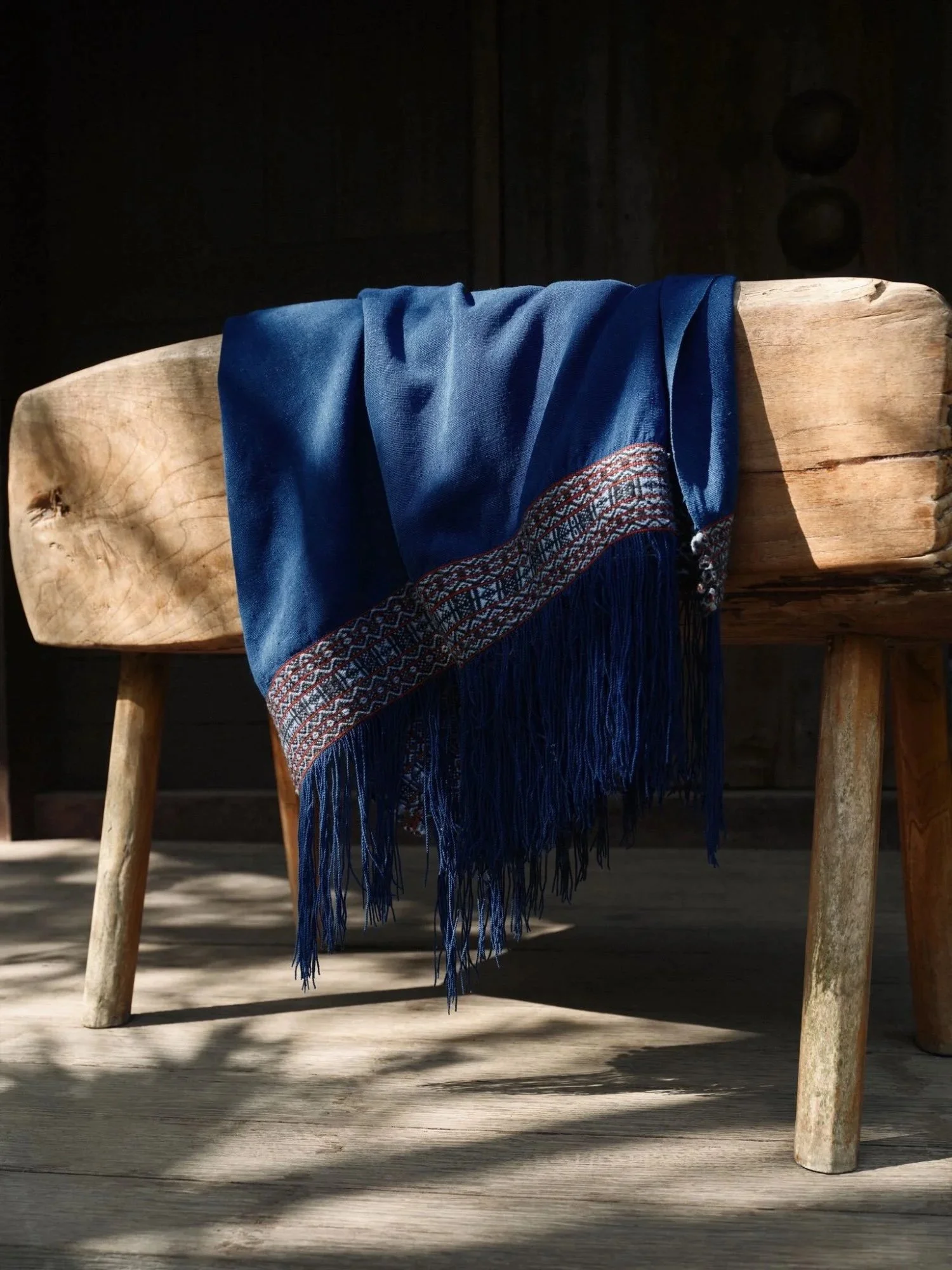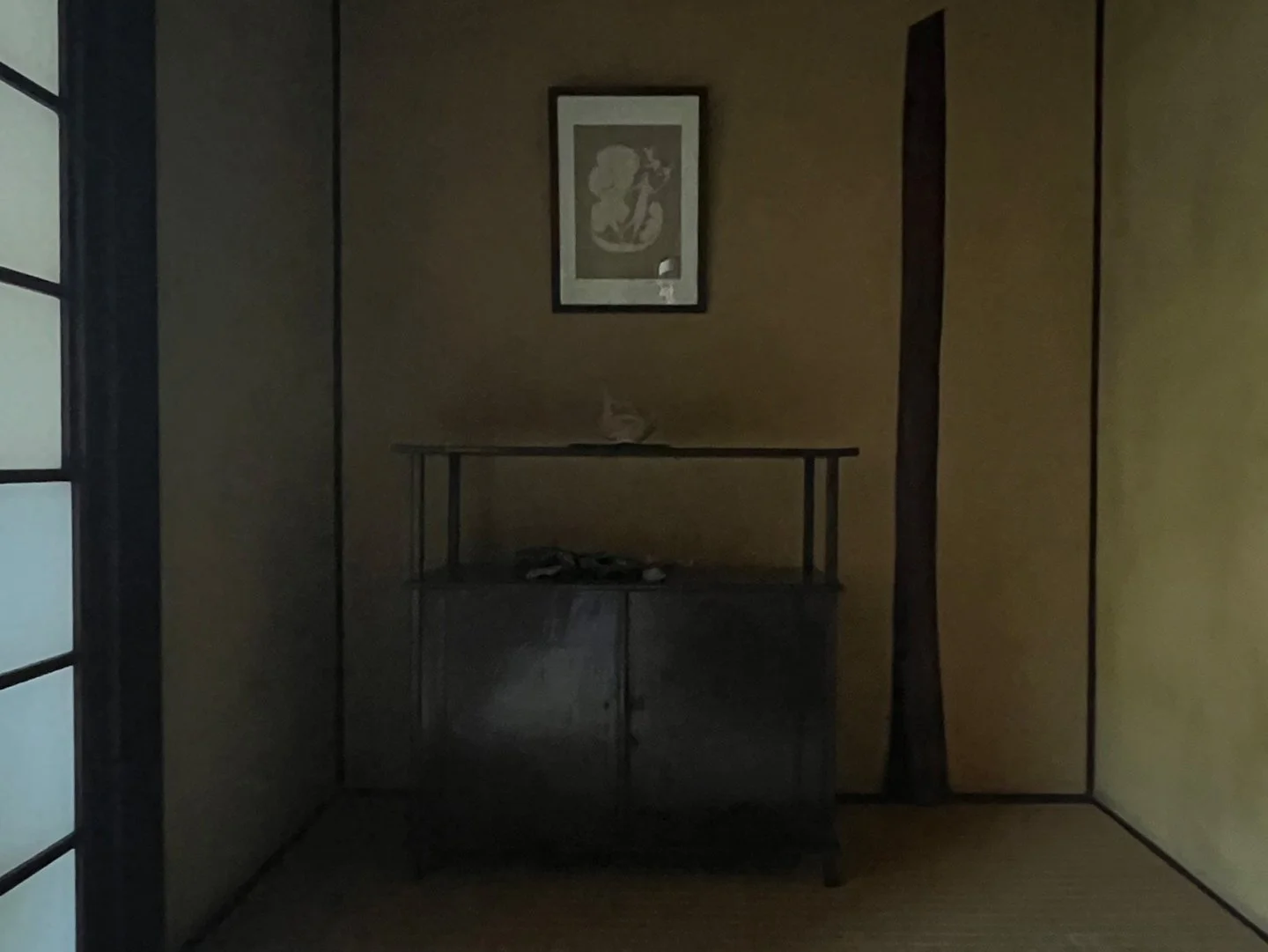JOURNALA space for stories about art, culture and craftsmanship
Indigo Blue, Insights of a Pigment History
Indigo blue is not just a color or a pigment. It has a very long history that has shaped civilizations.
Indigo blue is not just a pigment or a color. It has a very long history that has shaped civilizations.
indigofera plant
Few years ago, the Smithsonian and the Scientific American journal reported that scraps of indigo-dyed fabric had been found at the Huaca Prieta, a pre-colombian site of the late Preceramic period (c. 3500–1800 BCE), located in today’s North of Peru. This artifact has been dated as 6,200 years old. Prior to this discovery, the oldest found indigo-dyed fabric was in Egypt dated 2,400 BC. Such discoveries indicate a long continuity across civilizations in the use of indigo dye. In many regions, people today still use Indigofera tinctoria and related species to dye textile, employing similar techniques. This speaks to the long-standing and geographically widespread nature of shared human practices.
Even more ancient, an international research team led by Professor Karen Hardy from the University of Glasgow, found the “earliest evidence of the use of blue dye in the archaeological record, dating back over 34,000 years. Prehistoric people in Georgia were using stone pebbles to grind the leaves of Isatis tinctoria, also known as dyers woad, a plant known today for producing indigo dye.” According to the researchers, these recent discoveries illustrate the complexity of the interaction between humans and plants, not only for food but also for dye-making and medicine. In the past, resources were used out of necessity, and objects or services were created to fulfill basic needs. Humans have been ingenious on how to use resources at our disposal to develop and sustain life, contributing to shaping cultures and traditions and leading to the development of ‘craftsmanship’ as we know it today. Indigo is one example: it has inspired not just centuries but millennia of craft techniques including the traditional Japanese tie-dye called shibori and aizome, the Japanese art of indigo dyeing. It also served as the coloring agent in Maya Blue, a durable pigment used in pre-Columbian Mesoamerican art.
Indigo is also referred to as being the ‘blue gold’. It has been one of the most important commodities traded in the 18th and 19th centuries fueling slavery and colonialism. Indigo was traded on the Silk Road, from India, Central America, and the southern United States to textile markets in Europe. Indigo facilitated international investment and the development of new organizational forms such as trading companies, and early globalization by creating interconnected commodity chains around the world. Profits from the indigo trade, especially in India, supported the development of the British economy and helped fund Britain’s Industrial Revolution. In the American colonies, indigo exports supported both the local economy and projects like the Revolutionary War. Later, the Indigo Revolt of 1859–60 in India started an early, significant peasant movement that exposed colonial exploitation and influenced later agrarian and anti‑colonial mobilizations.
Indigofera, probably native to Southeast Asia, is a genus of 750 species growing in tropical and subtropical regions. Indigo tinctoria known as “true indigo” yields the richest dye. Indigofera suffruticosa (Guatemalan indigo) and Persicaria tinctoria (Japanese Indigo) are also used to create the magical blue. Today, chemical dyes are available in a wide range of colours simplifying dye processes (William Henry Perkin, an English chemist, is credited with inventing the first synthetic dye in 1856) but in many parts of the world, we continue to use the indigo pigment to dye textiles, in the same way that humans did more than 6,000 years ago. Indigo dye is distinct from other dyes due to the fact that it is chemically bonded by the fiber only after the reduced indigo is exposed to oxygen in the air. Indigo-dye provides much depth of colour and the process creates a depth and range of color coming from natural impurities. Indigo also does not require harsh chemicals and can produce a beautiful patina on textiles over time. It is the only natural dye that can achieve a permanent blue.
Across civilisations, indigo remains a symbol of tradition, power and resistance. The indigo color resonates with depth, sophistication, introspection, and spirituality. Indigo purple was the color of nobility during the Edo Period in Japan, it was also the color of the late singer, Prince. It is the color of the denim jeans that we wear today. It is a pigment that has inspired painters like Mark Rothko and Kandinsky. It is the color of the roof of the Shakespeare Globe Theater in London, symbolizing heaven.
The Indonesian Baduy Tribe: Weaving as a Connection to the Land
One fundamental principle of indigenous populations is that land is sacred. The land is a source of life, a provider of nourishment and a connection to ancestors
One fundamental principle of indigenous populations is that land is sacred. The land is a source of life, a provider of nourishment and a connection to ancestors. As such, indigenous people have a deep respect for the land: they do not extract more resources than what is needed to sustain life and in ways that do not harm the ecosystem. Respecting land preserves interconnectedness and harmony between human beings and nature.
Kanekes village, Java. home of the baduy tribe © Fadhlurrohman, 2023
The Kendeng Mountains in the Indonesian Island of Java (province of Banten), located only a few hours from Jakarta, are home to the Sundanese Baduy tribe. They believe that land is a divine gift ‘entrusted’ to them, and it is their duty to preserve and care for it. Mountains must not be destroyed, forests must be preserved as well as rivers and valleys. This small population of 11,700 individuals (as of 2025) living within the Kanekes village is self-reliant and lives in complete harmony with nature. In their Sundanese dialect, the word for land is Taneuh Titipan, which literally means Entrusted land. To preserve their ancestral customs and beliefs, the Baduy protect themselves from the outside world; they are one of the rare people today to live intentionally in isolation.
The Baduy tribe's way of life follows traditional customs and spiritual beliefs based on the Sudan Wiwitan, a faith which is rooted in animism and which has been influenced by Islam, Buddhism and Hinduism over the centuries. They are divided into two groups. The Inner Baduy (Baduy Dalam) live deep in the forest in houses made of bamboo with palm leaf roofs, facing South. As the interface between the external world and the Inner Baduy, the Outer Baduy (Baduy Luar) have a way of life that is more open to the outside world. They live closer to the boundaries of the village, and are increasingly exposed and influenced by the outside world.
Besides traditional farming which provides food, weaving is one of the ways to maintain the connection with land. The requirement to weave is written in the Baduy code of conduct (Pikukuh) and which can be translated as follows: “Birds live by their wings / Fish live by their fins / Humans live by their intellect / Reason, work, and speech / If you cannot weave words / You must be able to weave skills.” Weaving is an activity performed exclusively by women following ancestral principles and cultural inheritance occurs via enculturation and socialization. Parents teach their children values and skills. Children learn by doing from peers on porches, a process called Sosompang. Transmission starts at three years old, using simple bamboo tools, with learning progressing from play to full weaving mastering.
baduy woman weawing a tenun lumbung. © Fadhlurrohman, 2023
Every household built its own loom called Tenun Gendong. Made of wood and bamboo, they follow a manual hand-weaving technique and use non-mechanical looms, called Pakara Tinun. The process involves stringing the warp and tying it to the loom or making tubular cloth. The weaving process includes lifting the shuttle, sliding it back and forth, locking the weave, and inserting the weft, combing the result, and repeating.
Traditionally, in the Inner Baduy community, the yarn is produced from young Pelah leaves, resembling the salak tree, whose fibers were boiled and spun. As agriculture progressed, they began cultivating cotton. Yarn is boiled with rice water before use to ease spinning. The Outer Baduy weavers sometimes use factory-made thread. Motifs are inspired by nature and plants including Tajur Pinang, Suat Kembang Gedang, Poleng Kacang Herang Carang for men, and Kacang Herang Kerep for women. The Inner Baduy motifs are exclusively plain black and white reflecting a philosophy about purity and concentration. Black is primary and white represents inner purity coming from light. The Outer Baduy use mostly blue, black and white.They are gradually including more colors reflecting nature’s diversity. Textiles are made for daily clothing needs, and are also used as sashes, veils, breast cloths, headbands, and baby carriers. Textiles also play an important role as ritual complements during traditional ceremonies like Kawalu, Ngalaksa, Seba, rice planting and birth events.
The Language of Things: How Objects Speak of Human Identity
The relationship between humans and objects is a fundamental aspect of human existence. From the moment of birth, we engage with the objects that surround us, shaping our perceptions, beliefs, and behaviors.
Objects are a central part of daily life. What we use and how we use it shape our routines, beliefs, and shared values. In Japan, handcrafted items are created with care and purpose, reflecting respect for materials and an appreciation for crafstmanship. By looking closely at these objects, we can reflect how traditions and identity are preserved making material culture personal and collective.
interior of a japanese ryokan
The relationship between humans and objects is a fundamental aspect of human existence. From the moment of birth, we engage with the objects that surround us, shaping our perceptions, beliefs, and behaviors. Across the globe, diverse cultures exhibit unique ways of interacting with objects, reflecting their values, traditions, and historical contexts.
Material culture encompasses the physical objects and artifacts produced, used, and exchanged within a society. Looking deeper into these objects offers valuable insight into how communities function, communicate, and express their values. Its significance differs across cultures but often plays a key role in shaping collective identity, preserving traditions, and conveying beliefs.
Japanese culture emphasises minimalism and simplicity, deeply rooted in traditional philosophies like Zen Buddhism. The Japanese aesthetic values the beauty of simplicity, natural materials, and the appreciation of imperfections. Objects such as tea bowls, bonsai trees, and traditional wooden furniture exemplify this profound connection between Japanese culture and its material artefacts. These objects hold great significance within Japanese ceremonies and rituals, representing an approach to life that cherishes simplicity and harmony.
Jun'ichiro Tanizaki's "In Praise of Shadows" beautifully delves into the concept of minimalism and simplicity in Japanese culture. The book explores how the appreciation of shadows, darkness, and imperfections is deeply embedded in traditional Japanese aesthetics, particularly in their architecture and interior design. Tanizaki celebrates the muted and subdued qualities of Japanese culture, which prioritize the subtle beauty of objects and spaces over overt opulence.
In Japanese aesthetics, craftsmanship holds paramount significance, embodying the essence of meticulous attention to detail and dedication to excellence. The concept of "shokunin" (craftsman) carries great reverence in Japanese culture, emphasizing the artisan's commitment to honing their skills over years of training and practice. Japanese artisans approach their work as a form of spiritual expression. This devotion to craftsmanship not only produces objects of exceptional beauty and quality but also instills a sense of mindfulness and harmony between the creator, the material, and the eventual user. The deep respect for craftsmanship in Japanese aesthetics reflects the belief that every object has a soul and embodies the essence of the craftsperson's spirit, making each creation a work of art imbued with a profound sense of cultural heritage and artistic legacy.
The relationships between humans and objects in different cultures offer a rich tapestry for understanding human behavior and society. Whether through consumerism, minimalism, spirituality, or craftsmanship, material culture profoundly influences the way we perceive ourselves, others, and the world around us. Studying these diverse relationships can lead to a deeper appreciation of cultural diversity and a more profound understanding of our shared humanity.
Onta-Yaki: A Gem From Japan
Take yourself to Onta, a 300-year-old hamlet nestled between mountains outside the city of Hita, Japan. A small community of potters purify, shape and fire local earth into clay to produce Onta-yaki.
“Made for a purpose, made to do work. Sold to be used in everyday life.”
Take yourself to Onta, a 300-year-old hamlet nestled between mountains outside the city of Hita, Japan. A small community of potters purify, shape and fire local earth to produce pottery referred to as ‘Onta-yaki’ using techniques and methods passed down from generation to generation.
A winding road runs through the village alongside a river, houses and kilns sit backing onto the river. Here watermills crush the turmeric-coloured earth collected from the mountains into a fine powder, the thump of the millstones echo through the valley as the sound of the passing river settles into the background. During the several annual firings, the smell of the kilns fills the air, and smoke slowly rises from the staggered roofs, cantilevering over the river.
The village has carefully preserved traditional methods, mindfully harvesting local materials and energy from the earth to produce long-lasting earthenware. The clay is collected from the mountains, purified using the power of the river, and then fired and glazed using wood-fired kilns. Each aspect of this production is unique to Onta, including patterns such as "hakeme" (brush marks), "tobikana" (distinct patterns), finger drawings, and "kushigaki" (combed lines), adding to the unique identity of every piece.
Map of Onta Village, Japan
There is a strong sense of community in the village of Onta, with families playing a crucial role in the creation of every piece, each one inscribed with the mark of “Onta (小鹿田), the production is the work of the community, not that of an individual. In touch with the Mingei art movement, founded in Japan in the mid-1920s by Yanagi Sōetsu, Onta-yaki is a rejection of the perfect. The Mingei art movement relates to the conceptualisation of national identity in terms of the common people and focuses on simplicity and utility. Onta-yaki was designated by the national government as an Intangible Cultural Property of Japan in 1970, and upgraded to Important Intangible Cultural Property of Japan in 1995 demonstrating the historic, cultural and artistic prowess of this small community.
Made solely using the power of humans and nature, Onta’s potters are creating objects that symbolise the timelessness of our relationship with the earth and a mastery of the elements. We can feel the warmth of the earth as we hold each piece in our hands, making it feel as if it has absorbed the energy of the people and the nature that has created it. Onta-yaki is designed to be used daily, becoming a part of the rituals we perform and the spaces we inhabit.











